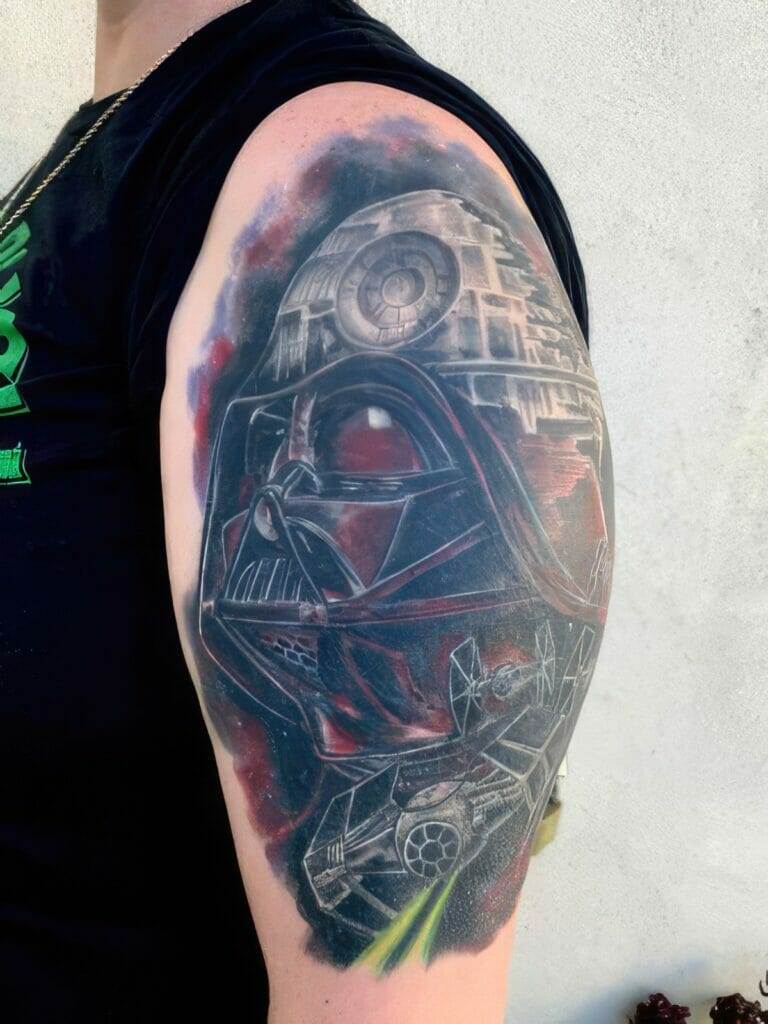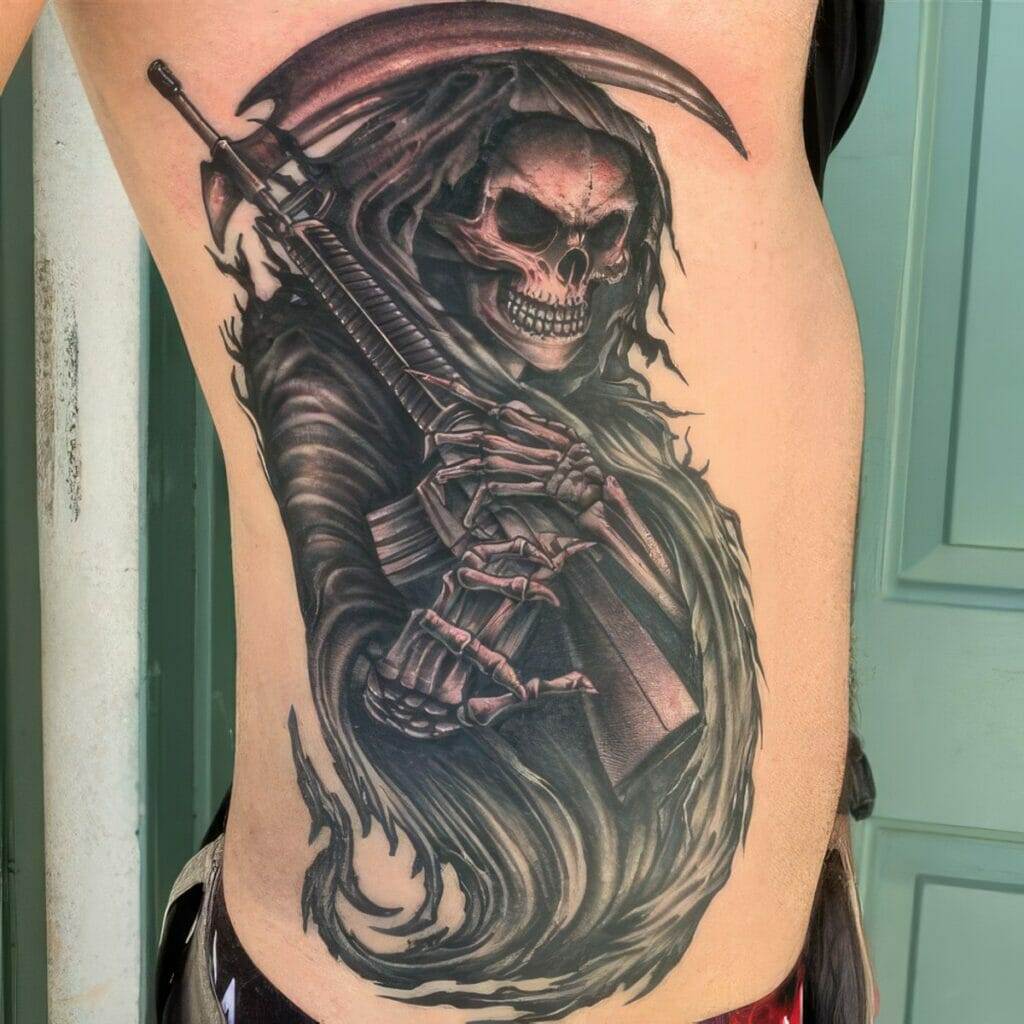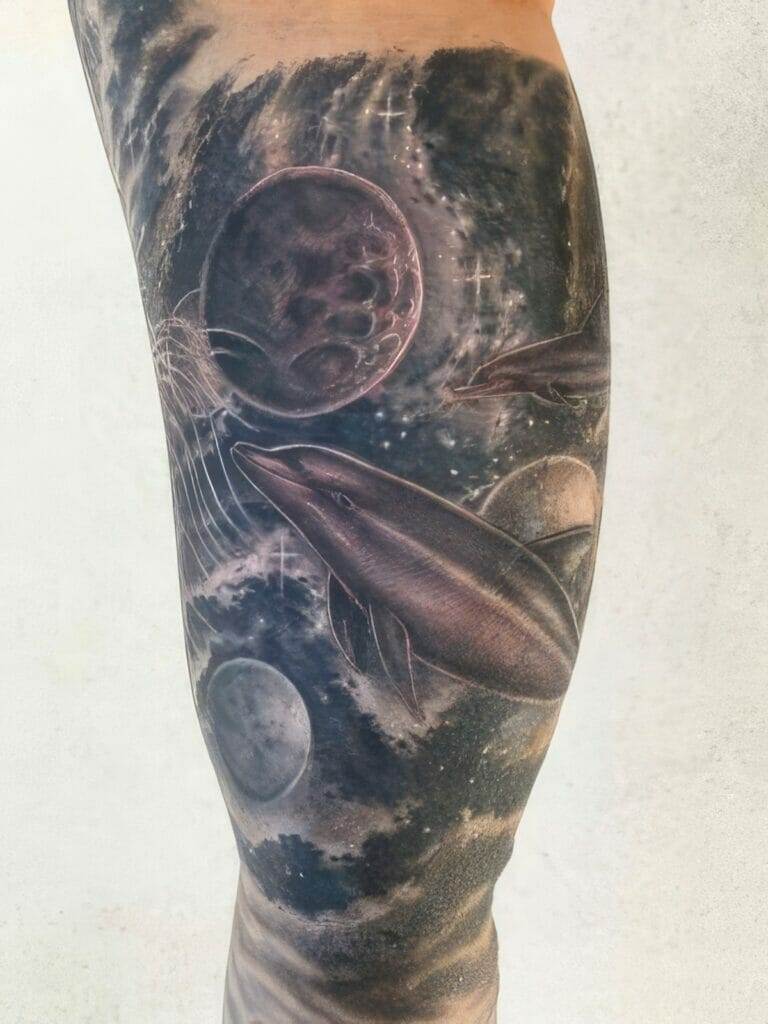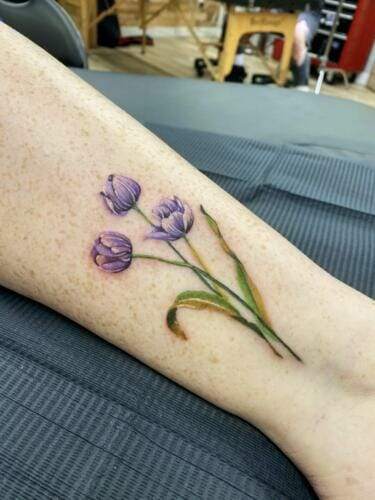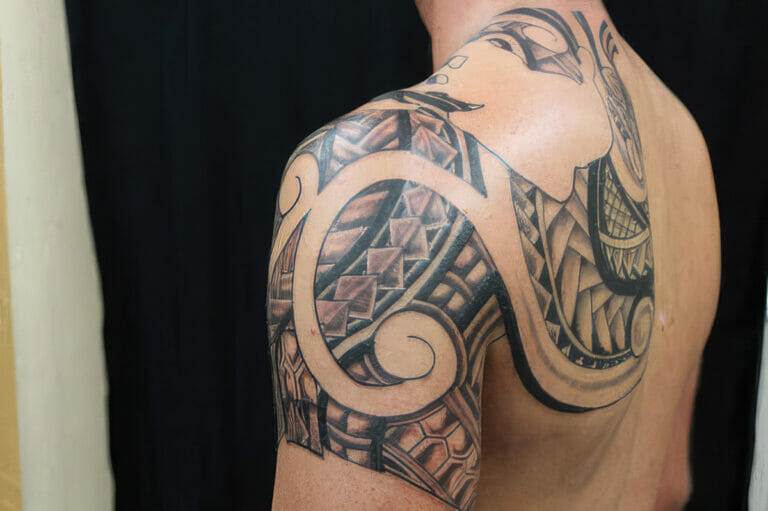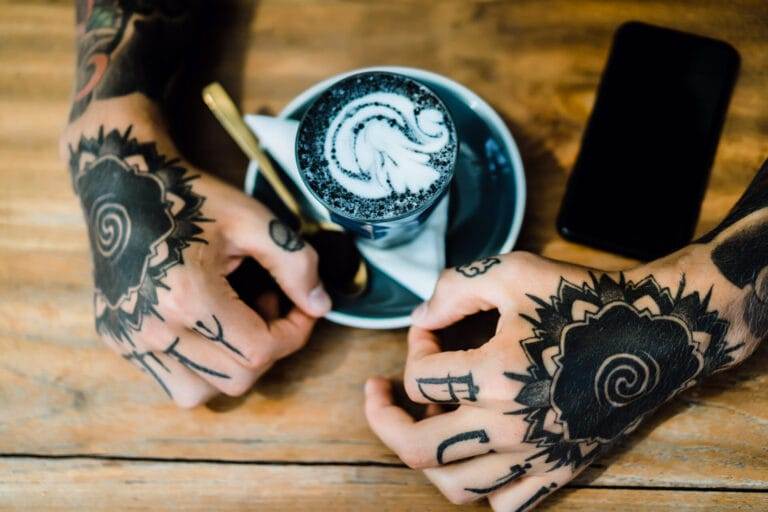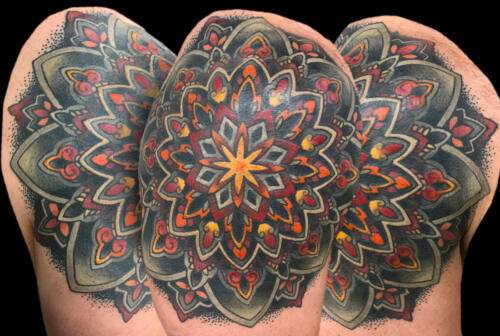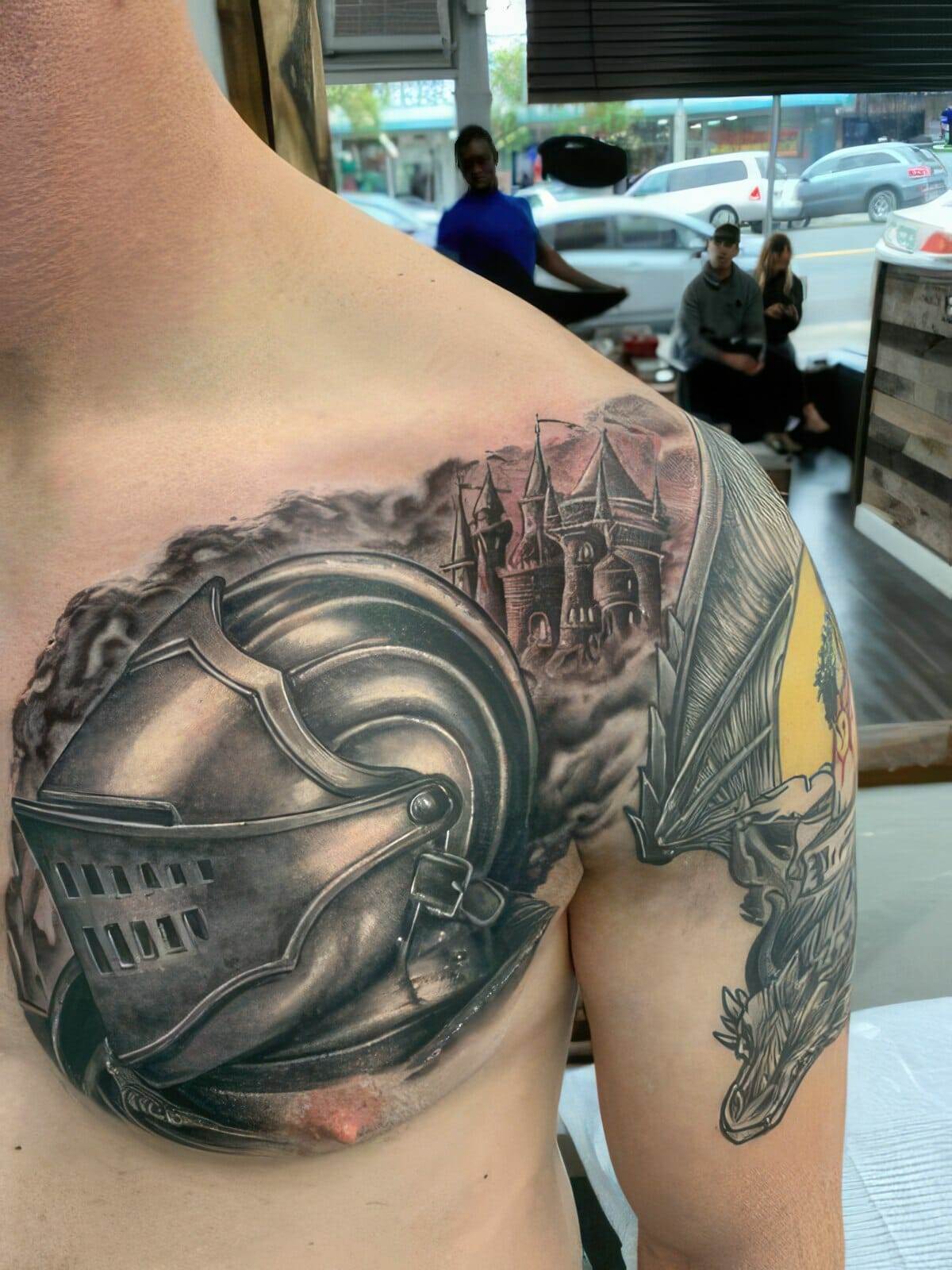
Getting a tattoo is a big decision, and it’s important to take the time to carefully plan and design your tattoo before getting inked. One crucial step in this process is having a consultation with a tattoo artist. A consultation allows you to discuss your ideas and vision with the artist, ensuring that you both are on the same page and that the final design meets your expectations. In this article, we will explore the importance of a consultation in tattoo design and provide tips for finding the right artist, preparing for your consultation, discussing your ideas, exploring different styles, considering placement and size, addressing concerns about pain and aftercare, reviewing your artist’s portfolio, finalizing your design, understanding the importance of communication throughout the process, and scheduling your tattoo appointment.
Understanding the Role of a Consultation in Tattoo Design
A consultation is a meeting between you and a tattoo artist to discuss your tattoo ideas and design. It is an essential step in the tattoo process because it allows you to communicate your vision to the artist and ensure that they understand what you want. During the consultation, you can discuss details such as the size, placement, style, and color of your tattoo. The artist can also provide their professional input and suggestions based on their expertise.
Having a consultation before getting a tattoo has several benefits. Firstly, it allows you to establish a rapport with the artist and ensure that you feel comfortable working with them. Tattooing is an intimate process that requires trust between the artist and client, so it’s important to find someone who makes you feel at ease. Secondly, a consultation gives you the opportunity to see examples of the artist’s previous work and assess their skill level. This can help you determine if their style aligns with your vision for your tattoo. Lastly, a consultation allows you to make any necessary adjustments or changes to your design before it is permanently inked on your skin.
Preparing for Your Consultation: What to Bring and What to Expect
Before attending your consultation, it’s important to come prepared with some essential items. Here is a checklist of things to bring:
1. Reference images: If you have any specific reference images or ideas for your tattoo, bring them along to show the artist. This will help them understand your vision better.
2. Questions: Prepare a list of questions you want to ask the artist during the consultation. This can include inquiries about their experience, their process, aftercare instructions, and any concerns you may have.
3. Clothing choice: Wear clothing that allows easy access to the area where you plan to get tattooed. This will make it easier for the artist to assess the placement and size of your tattoo.
During the consultation, you can expect the artist to ask you questions about your design ideas, your pain tolerance, and your overall expectations for the tattoo. They may also take measurements or make sketches to help visualize the design. Be open and honest with the artist, as this will ensure that they can create a tattoo that meets your expectations.
Discussing Your Ideas and Vision with Your Tattoo Artist
Effectively communicating your ideas and vision to your tattoo artist is crucial for a successful consultation. Here are some tips to help you communicate effectively:
1. Be clear and specific: Clearly articulate your ideas and be as specific as possible. Use descriptive language to convey the style, colors, and elements you want in your tattoo.
2. Bring visual references: If you have any reference images or examples of tattoos that inspire you, bring them along to show the artist. Visual references can help bridge any communication gaps and provide a visual representation of your vision.
3. Listen to the artist’s suggestions: While it’s important to communicate your ideas, it’s equally important to be open to the artist’s suggestions. They are professionals with experience and expertise in tattoo design, so their input can enhance your design and ensure its longevity.
Remember that the consultation is a collaborative process between you and the artist. By effectively communicating your ideas and being open to their suggestions, you can create a design that is unique and meaningful to you.
Exploring Different Tattoo Styles and Techniques
Tattoos come in various styles and techniques, each with its own aesthetic appeal and symbolism. Here is an overview of popular tattoo styles:
1. Traditional: Traditional tattoos are characterized by bold lines, vibrant colors, and iconic imagery such as anchors, roses, and swallows. This style is rooted in American tattooing history and has a timeless appeal.
2. Realism: Realism tattoos aim to replicate the appearance of real-life objects or portraits with intricate details and shading. This style requires a high level of skill and precision.
3. Blackwork: Blackwork tattoos use only black ink to create bold, graphic designs. This style often incorporates geometric patterns, mandalas, or tribal motifs.
4. Watercolor: Watercolor tattoos mimic the appearance of watercolor paintings with soft edges, vibrant colors, and abstract designs. This style is known for its dreamy and ethereal aesthetic.
5. Neo-traditional: Neo-traditional tattoos combine elements of traditional tattooing with more modern techniques and imagery. They often feature bold lines, vibrant colors, and exaggerated proportions.
When choosing a tattoo style, consider your personal preferences, the meaning behind your design, and how it will age over time. Discuss your ideas with the artist during the consultation to determine which style will best suit your design.
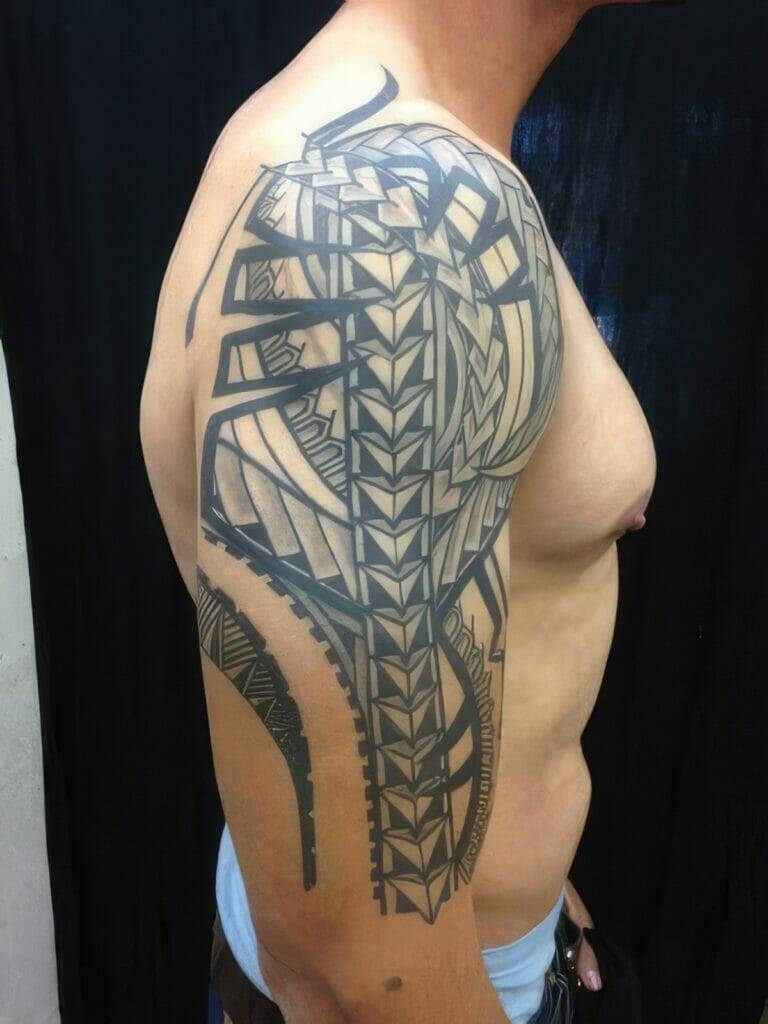
Considering Placement and Size of Your Tattoo
The placement and size of your tattoo are important factors to consider during the consultation. Here are some things to keep in mind:
1. Consider visibility: Think about whether you want your tattoo to be visible or easily concealable. This will help determine the placement, especially if you have professional or personal considerations.
2. Think about the body’s natural contours: Consider how the design will flow with the natural contours of your body. Certain designs may look better on specific areas, while others may need to be adjusted to fit properly.
3. Size matters: The size of your tattoo can affect the level of detail that can be achieved and how it will age over time. Smaller tattoos may require simpler designs, while larger tattoos can accommodate more intricate details.
Discuss your ideas with the artist during the consultation, and they can provide guidance on the best placement and size for your design.
Addressing Concerns about Pain and Aftercare
Pain and aftercare are common concerns when getting a tattoo. Here are some tips to help address these concerns:
1. Pain management: Everyone’s pain tolerance is different, so it’s important to be prepared for some level of discomfort during the tattoo process. However, there are ways to manage pain, such as taking breaks, using numbing creams, or practicing deep breathing techniques.
2. Aftercare instructions: Aftercare is crucial for the healing and longevity of your tattoo. Your artist will provide you with specific aftercare instructions, which may include keeping the tattoo clean, avoiding direct sunlight, and applying a healing ointment.
3. Ask questions: If you have any concerns or questions about pain or aftercare, don’t hesitate to ask your artist during the consultation. They can provide you with guidance and reassurance.
Remember that getting a tattoo is a personal experience, and everyone’s pain tolerance and healing process may vary. By following your artist’s aftercare instructions and managing pain effectively, you can ensure a smooth healing process.
Reviewing Your Tattoo Artist’s Portfolio and Previous Work
Reviewing your tattoo artist’s portfolio and previous work is an essential step in the consultation process. Here’s why it’s important:
1. Assess their skill level: Reviewing an artist’s portfolio allows you to assess their skill level and determine if their style aligns with your vision for your tattoo. Look for clean lines, smooth shading, and attention to detail in their work.
2. Evaluate consistency: Consistency is key when reviewing an artist’s portfolio. Look for a consistent quality of work across different designs and styles. This will give you confidence in their ability to execute your design.
3. Check for versatility: While it’s important to find an artist whose style aligns with your vision, it’s also beneficial to find someone who can adapt to different styles and techniques. This versatility demonstrates their range and expertise.
When reviewing an artist’s portfolio, pay attention to the quality of their work, their versatility, and their ability to execute different styles. This will help you make an informed decision about whether they are the right artist for your tattoo.
Finalizing Your Tattoo Design and Making Any Necessary Adjustments
After discussing your ideas with the artist and reviewing their portfolio, it’s time to finalize your tattoo design. Here are some tips for this process:
1. Be open to adjustments: During the consultation, the artist may suggest adjustments or modifications to your design based on their expertise. Be open to these suggestions, as they can enhance the overall quality and longevity of your tattoo.
2. Ask for a sketch or mock-up: If you want to see a visual representation of your design before getting tattooed, ask the artist if they can provide a sketch or a digital mock-up. This can help you visualize the final result and make any necessary adjustments.
3. Take your time: Don’t rush the design process. Take the time to carefully consider all aspects of your design and make any necessary adjustments before giving the final approval.
By being open to adjustments and taking your time with the design process, you can ensure that your tattoo design is exactly what you envisioned.
Understanding the Importance of Communication Throughout the Tattoo Process
Communication is key throughout the entire tattoo process, from the initial consultation to the final session. Here’s why it’s important:
1. Establishing trust: Effective communication helps establish trust between you and the artist. By openly discussing your ideas, concerns, and expectations, you can build a strong rapport and ensure that both parties are on the same page.
2. Clarifying expectations: Clear communication ensures that both you and the artist have a clear understanding of what is expected from each other. This includes discussing details such as design elements, placement, size, pain management, aftercare instructions, and any other concerns.
3. Providing feedback: Throughout the tattoo process, it’s important to provide feedback to the artist. If you have any concerns or if something doesn’t meet your expectations, communicate this to the artist so that they can make any necessary adjustments.
Remember that effective communication is a two-way street. Be open and honest with the artist, and encourage them to do the same. By maintaining open lines of communication, you can ensure a smooth and satisfying tattoo experience.

Scheduling Your Tattoo Appointment and Preparing for Your Session
Once you have finalized your design and established clear communication with the artist, it’s time to schedule your tattoo appointment. Here are some tips for this process:
1. Plan ahead: Tattoo artists often have busy schedules, so it’s important to plan ahead and book your appointment in advance. This will give you ample time to prepare mentally and physically for your session.
2. Consider timing: Think about the best time of day or week for your tattoo appointment. Choose a time when you are well-rested, relaxed, and have no other commitments immediately after the session.
3. Prepare mentally and physically: Getting a tattoo can be a physically and mentally demanding experience. Make sure you get enough rest, eat a good meal before your appointment, and stay hydrated. Additionally, mentally prepare yourself for the process by practicing relaxation techniques or listening to calming music.
On the day of your appointment, arrive on time and bring any necessary items such as identification, payment, and any additional reference images or materials.
In conclusion, a consultation is an essential step in the tattoo design process. It allows you to communicate your ideas and vision to the artist, ensuring that they understand what you want and can create a design that meets your expectations. By finding the right tattoo artist, preparing for your consultation, discussing your ideas effectively, exploring different styles, considering placement and size, addressing concerns about pain and aftercare, reviewing your artist’s portfolio, finalizing your design, understanding the importance of communication, and scheduling your tattoo appointment, you can ensure a successful and satisfying tattoo experience. Remember to take your time, be open to adjustments, and maintain clear communication with your artist throughout the process.

